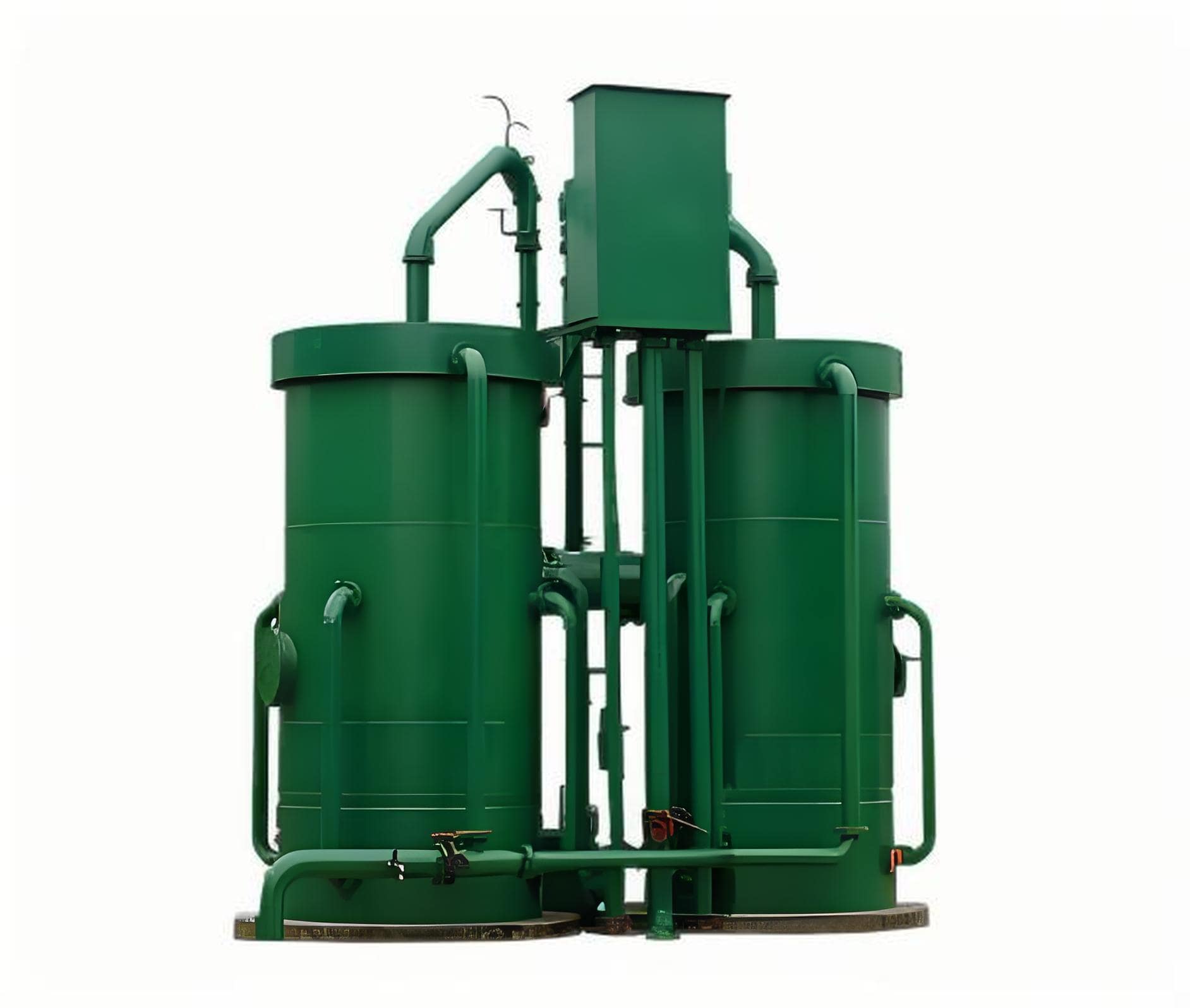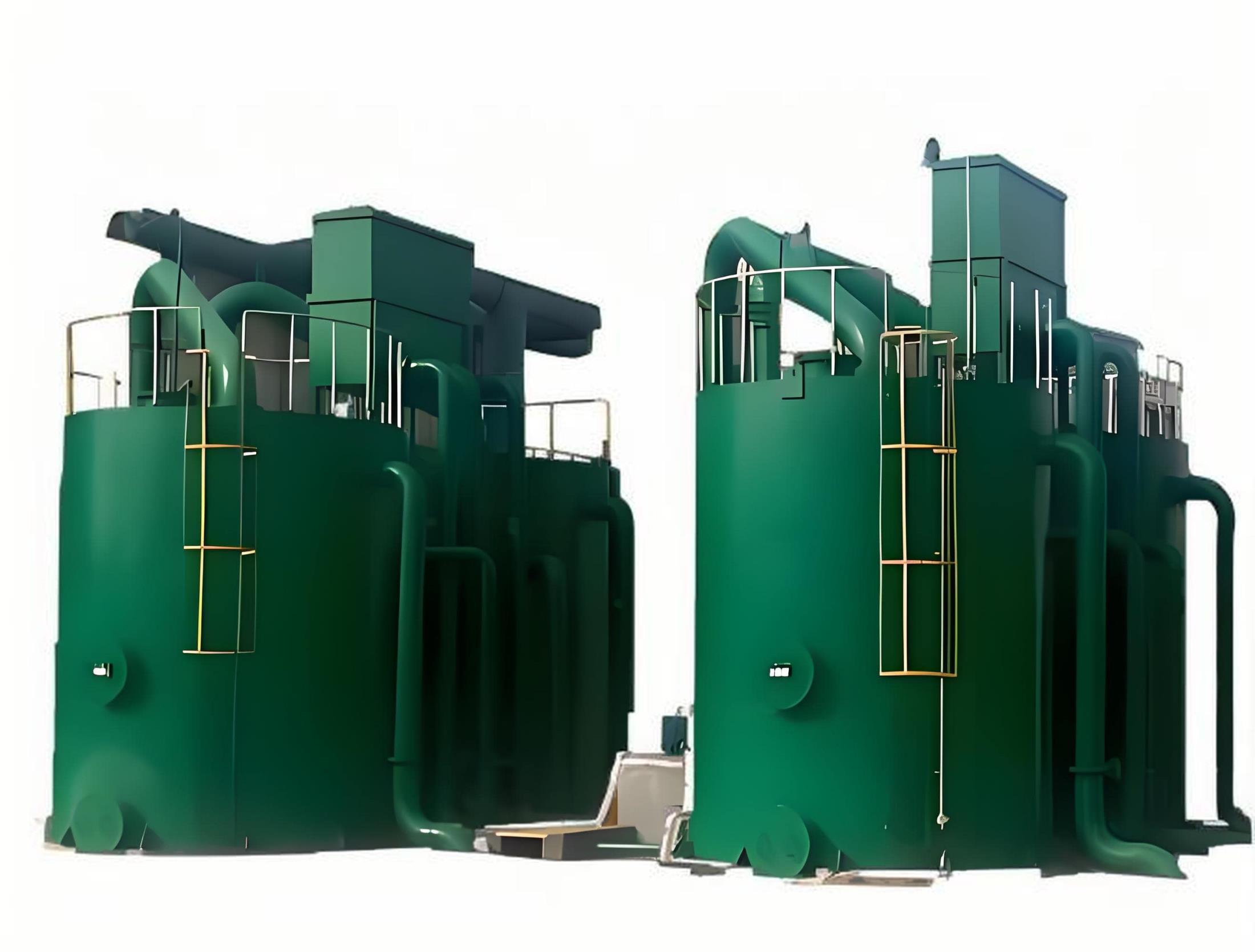The gravity valveless filter has advantages such as no large valves, positive-head filtration, automated backwashing, low manufacturing cost and easy operation.
This filter is a valveless rapid filter. During operation, the water level remains constant.
As the head loss valve increases, the water level in the suction pipe continues to rise. When the water level reaches the top of the siphon pipe and a siphoning phenomenon is formed, backwashing and stratification automatically begin, and wastewater is discharged through the siphon pipe to the outside of the tank.
The fully automatic valveless gravity filter system is valveless and operates automatically via hydraulic pressure. This operation method is cost-effective and easy to manage. It features safety, automation, and integrated equipment. It integrates the water tank, filter, and backwash tank into a single unit. Its compact structure allows users to simply build the base and connect the inlet and outlet pipes to start operation. Furthermore, this series of filters is equipped with a top cover, providing excellent protection and suitable for outdoor installation.
Raw water flows into the filter tank through the distribution tank, and the filtration direction is top-down. Because the filter layer traps suspended matter in the incoming water, the head loss gradually increases, causing the water level in the siphon to rise. When the water level rises to the water inlet in the auxiliary siphon pipe, the air in the siphon is hydraulically extracted, creating a negative pressure. When the negative pressure reaches a predetermined value, a siphoning phenomenon occurs, and the water in the tank backwashes from bottom to top, "regenerating" the filter layer. Because the filter layer is continuously backwashed, when the water level in the tank drops to a specified value, the siphoning effect is broken, the backwashing process ends, and the filtration device resumes operation.
The fully automatic valveless gravity filter is primarily suitable for purifying various types of surface water. After treatment, the effluent turbidity is less than 3000 ml/L, and the treated water can be used for both domestic and industrial purposes. Furthermore, the filter can also reuse industrial wastewater such as cooling water, mine water, and circulating water, effectively increasing water reuse rates. Specific application scenarios are as follows:
Suitable for bypass filtration of industrial circulating cooling water in the petroleum, chemical, pharmaceutical, metallurgical, power plant, light industry, textile, printing and dyeing, and finishing industries.
Suitable for purifying surface water and removing iron and manganese from groundwater.
Suitable for filtration and treatment in urban and township water plants.
Suitable for pretreatment of softening and desalination.
Suitable for purification of swimming pools and fountains.
Suitable for removing suspended solids from industrial wastewater. It can also be used when organic wastewater undergoes biochemical treatment and then passes through a two-stage sedimentation tank.
For water treatment and filtration, the inlet suspended solids content must be less than 15 mg/l, and the treated effluent suspended solids content must be less than 3 mg/l.
For circulating cooling water treatment, the inlet suspended solids content is generally between 15 and 30 mg/l, and the effluent suspended solids content is less than 5 mg/l. 3. When used for coagulation treatment, the suspended solids content of the inlet water is 50-100mg/l, and the suspended solids content of the outlet water is less than 5mg/l.


Copyright 2025 All Right Reserved. Hebei Fupeng Environmental Protection Technology Group Co., LTD